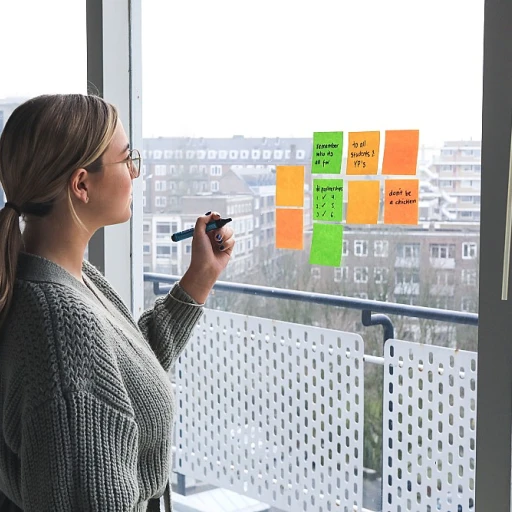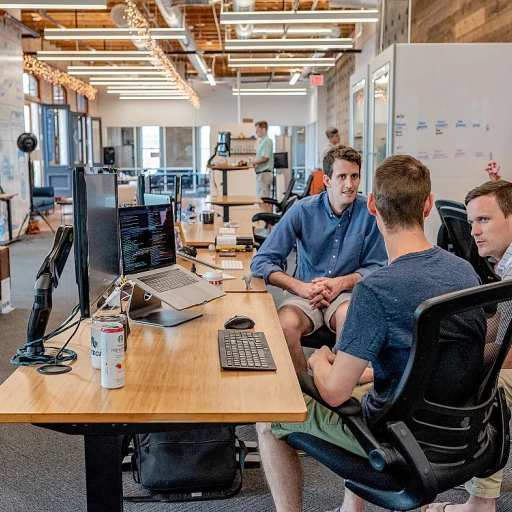Understanding the Cultural Context
Embracing Cultural Richness in Office Design
Creating an office environment that resonates with the unique Indian cultural context involves a delicate balance of various elements. In a country as diverse as India, understanding the cultural intricacies is paramount to crafting an ideal CEO office. In India, an office is more than just a place of work; it's a space where tradition meets modernity. The design should reflect this harmonious blend. Incorporating traditional Indian motifs, such as intricate patterns or regional art, can infuse personality into an otherwise modern office. Natural materials like wood or stone can add a touch of warmth and luxury to the modern office interior. These not only accentuate India's rich heritage but also create a high-quality aesthetic appeal that modern CEOs appreciate. Given the Indian climate and emphasis on wellness, leveraging natural light within the executive office is vital. Not only does it elevate the mood, but it also enhances productivity by reducing eye strain — a luxury more CEOs are conscious of today. Modern luxury design in Indian CEO offices is not complete without high-quality furniture. Selecting the right desk and chairs, crafted with exquisite materials, can affirm the executive's commitment to excellence. By integrating traditional Indian elements with modern design principles, CEOs and designers alike can create executive spaces that are as culturally resonant as they are functionally superior. To learn more about creating an agile office setting that empowers remote teams, explore agile office management in Indian firms.Balancing Aesthetics and Functionality
Achieving a Harmonious Balance Between Aesthetics and Functionality
Creating an ideal CEO workspace in Indian companies requires a symphony of elegant aesthetics and practical functionality. A beautiful space that doesn't serve its purpose can be as inefficient as a plain, uninspiring room. Thus, the key lies in striking the perfect balance between these aspects. Designing a modern executive office in India often involves integrating elements that cater to both the visual appeal and the functional requirements of the workspace. Consider the following components that can help achieve this balance:- Thoughtful Furniture Selection: While it's tempting to opt for luxury, choose office furniture that complements both the decor style and the functional needs, without compromising on comfort and utility.
- Layering with Lighting: Effective use of lighting not only enhances the interior design but also optimizes the office environment for various tasks. Combining natural light with adjustable lighting fixtures can contribute significantly to an inviting atmosphere.
- Intelligent Space Planning: Prioritize a layout that enhances movement and workflow, making sure the modern office serves its intended purpose while maintaining an open and welcoming feel.
Incorporating Sustainable Design Elements
Infusing Eco-Friendly Choices into the CEO's Workspace
When designing the interiors of a CEO office, incorporating sustainable elements is no longer just a trend—it's a necessity. Indian companies are increasingly acknowledging the importance of eco-friendly practices, aligning with global standards of responsibility and sustainability. Consider using high-quality, sustainable materials that not only enhance the aesthetic appeal but also reduce the environmental impact. Bamboo and reclaimed wood are excellent choices for furniture, offering durability and style, complementing the modern executive office environment. Additionally, opting for natural fibers in upholstery and rugs can contribute to a more sustainable office interior. Lighting plays a crucial role in sustainable office design. Incorporating natural light through well-placed windows not only illuminates the space but also reduces energy consumption. Where artificial lighting is necessary, opting for energy-efficient LED fittings can maintain a luxury look while ensuring environmental responsibility. The integration of plants and greenery into the office decor can create a refreshing atmosphere and improve air quality, thus fostering a healthier work environment. Vertical gardens or small planters can add a touch of nature without overwhelming the room space. Ultimately, these mindful choices in office design are about balancing luxury with responsibility, creating a workspace that embodies both high standards and environmental considerations. For those seeking to understand how competencies fit into the modern Indian office, further insights can be found that align with these sustainable practices.Technology Integration in the Modern CEO Office
Embracing Technological Advancements
In the realm of modern office design, technology is not just an add-on but a fundamental component that enhances the functionality and efficiency of the CEO office. As Indian companies continue to evolve, integrating cutting-edge technology into the office interior becomes crucial for maintaining a competitive edge.
One of the primary considerations is the seamless integration of technology with the office decor. This involves selecting furniture and materials that accommodate technological devices without compromising the luxury and style of the executive office. For instance, desks equipped with built-in charging stations and cable management systems can help maintain a clutter-free environment, enhancing both aesthetics and functionality.
Smart Solutions for Enhanced Efficiency
The use of smart technology can significantly improve the office space. From smart lighting systems that adjust based on natural light to advanced climate control systems, these innovations create a comfortable and efficient working environment. Such systems not only contribute to a luxury modern feel but also promote energy efficiency, aligning with sustainable design principles.
Moreover, incorporating high-speed internet and robust communication tools is essential for a modern CEO. These elements facilitate seamless connectivity, ensuring that the CEO can communicate effectively with teams, regardless of their location. This aspect ties back to the need for a balanced approach between aesthetics and functionality, as discussed earlier.
Creating a Future-Ready Office
As the business landscape continues to change, preparing the CEO office for future technological advancements is vital. This involves designing flexible office interiors that can adapt to new technologies as they emerge. By investing in high-quality, adaptable furniture and interior design elements, companies can ensure their executive offices remain relevant and effective.
In conclusion, integrating technology into the CEO office is not merely about keeping up with trends but about creating a space that supports the dynamic needs of modern business leaders. This approach, combined with the other key elements of office design, helps craft a workspace that is both innovative and inspiring.
Personalization and Branding
Personal Touch and Distinct Branding in the Executive Workspace
Creating an office for a CEO that blends personalization and branding is key to establishing an inspiring work environment. As a reflection of the executive's personality and the company's identity, the office design speaks volumes about both the individual at its helm and the organization. To achieve a personalized touch, consider these elements:- Decor and Art: Incorporate unique pieces that reflect the CEO’s personal taste. Artworks, sculptures, and other decor items can add character and resonate with the CEO’s values and interests, enhancing the overall office decor.
- Interior Themes: Select a cohesive interior design theme that aligns with the company’s brand. Whether it’s contemporary, classic, or industrial, the theme should harmonize with the modern office style.
- Materials and Textures: High-quality materials such as polished wood, leather, and stone can add a sense of luxury to the office. These materials not only elevate the aesthetic appeal but also provide a tactile experience that emphasizes quality.
- Furniture Selection: Opt for furniture that marries aesthetics with ergonomics. Executive chairs and desks should exude luxury and comfort, supporting productivity while enhancing the overall style of the interior office.
- Wall Treatments and Colors: The color scheme should complement the brand colors, perhaps featuring an accent wall that showcases the company’s logo or a corporate motto, creating a visual link to the brand’s identity.






-large-teaser.webp)